We are used to thinking of a brick wall as of something solid and impenetrable, but also humble and dull. But this prosaic and rough material that is historically used in places hidden from the view can become a prominent design element, soft, fluid and transparent, letting the light and air in. The very idea of a brick façade has acquired a new life in architecture of today.
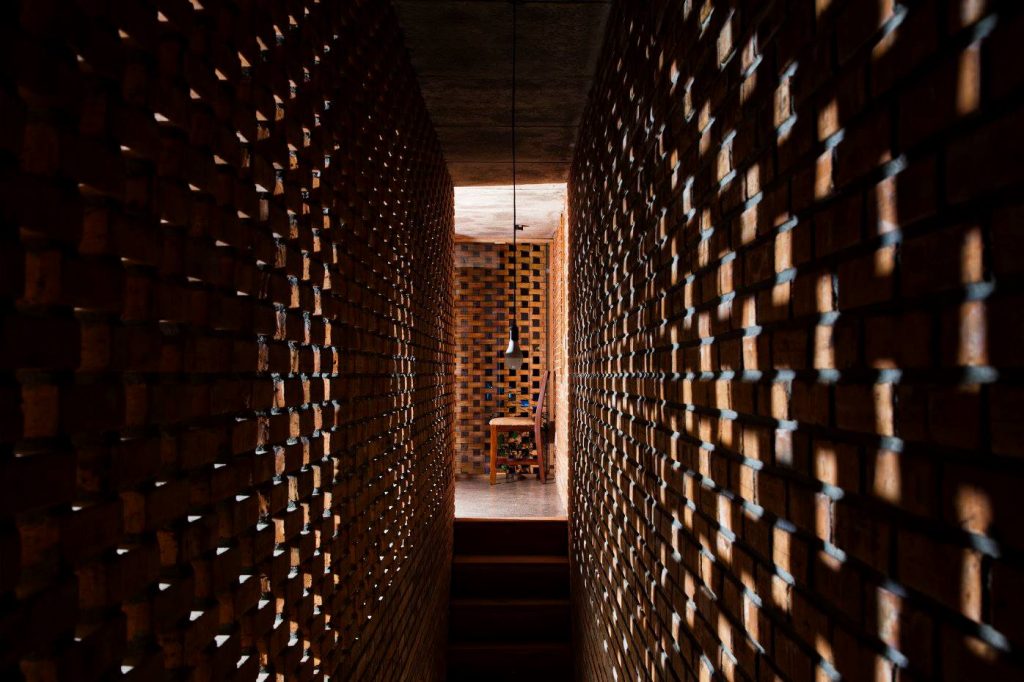
California-based firm Brooks + Scarpa has created the Thayer Brick House a suburban Chicago home for an investment broker. Encompassing 260sqm, it is notable for its inner courtyard screened from the road by vertical twisting columns of brick.
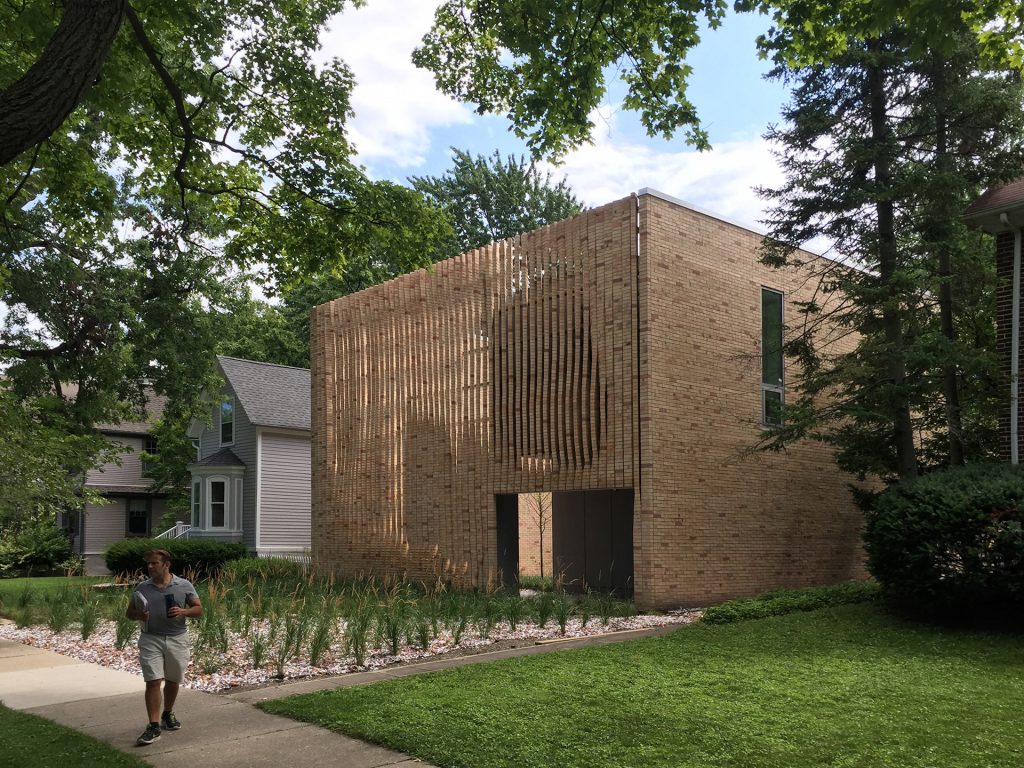
Lipton Thayer Brick House Chicago by Brooks + Scarpa
The team has chosen to build with brick, as this material is often found in American architecture, however replacing typical red brick with Chicago common brick, which is made of local clay, has rugged texture, comes in various hues and is generally inexpensive.
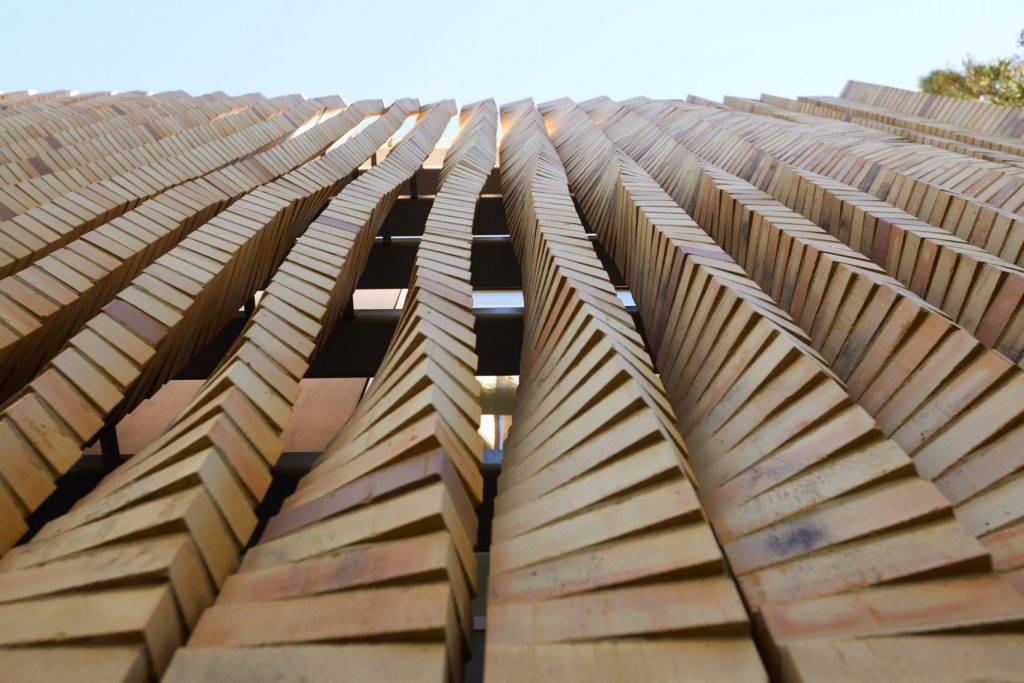
Lipton Thayer Brick House Chicago by Brooks + Scarpa
A distinctive screen made of bricks placed at different angles forms the front façade to create an ever-changing pattern for a passer-by as light moves across and through it. Brick is also used for sidewalls and was left visible within several interior rooms. As a result, light seeping through the brickwork produces a shifting geometric pattern of light and shadow on the walls and floors of the rooms. At night, conversely, the brickwork reveals golden glow from within.

Saadat Abad Residential Building by Fundamental Approach Architects. Ph: Parham Taghioff
Iranian studio Fundamental Approach Architects has transformed the facade of an eight-storey Saadat Abad Residential Building in Tehran using angular screens of perforated brick.
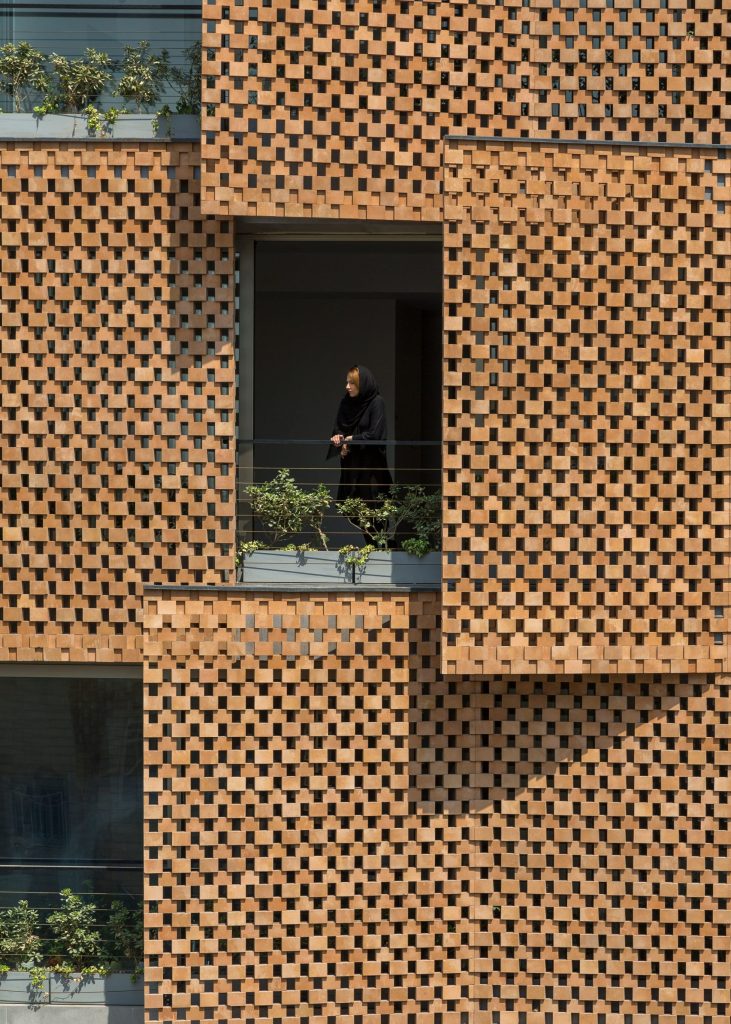
Saadat Abad Residential Building by Fundamental Approach Architects. Ph: Parham Taghioff
To maximize views of the building’s surroundings, the architects pushed living spaces to the front, covering the façade with a double skin of glass and brick panels meant to provide the privacy required in the apartments. Thus, the traditional solid façade with small openings intended to connect the indoor and the outdoor is replaced here by a fluid soft space between the brick and the glass.
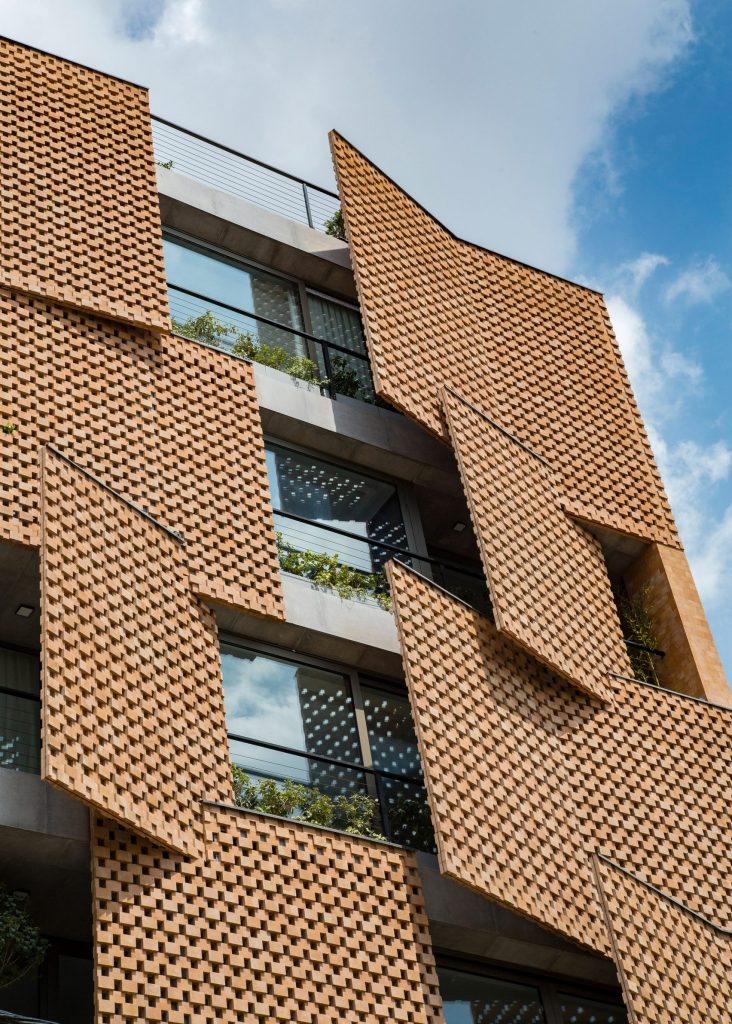
Saadat Abad Residential Building by Fundamental Approach Architects. Ph: Parham Taghioff
The brick panels on the façade have been twisted outwards to angle views from the living spaces, animate the exterior and provide natural ventilation. Inside, textured brick walls reference the external panels, and stone flooring resembles the pavement outside merging the interior into the urban context.
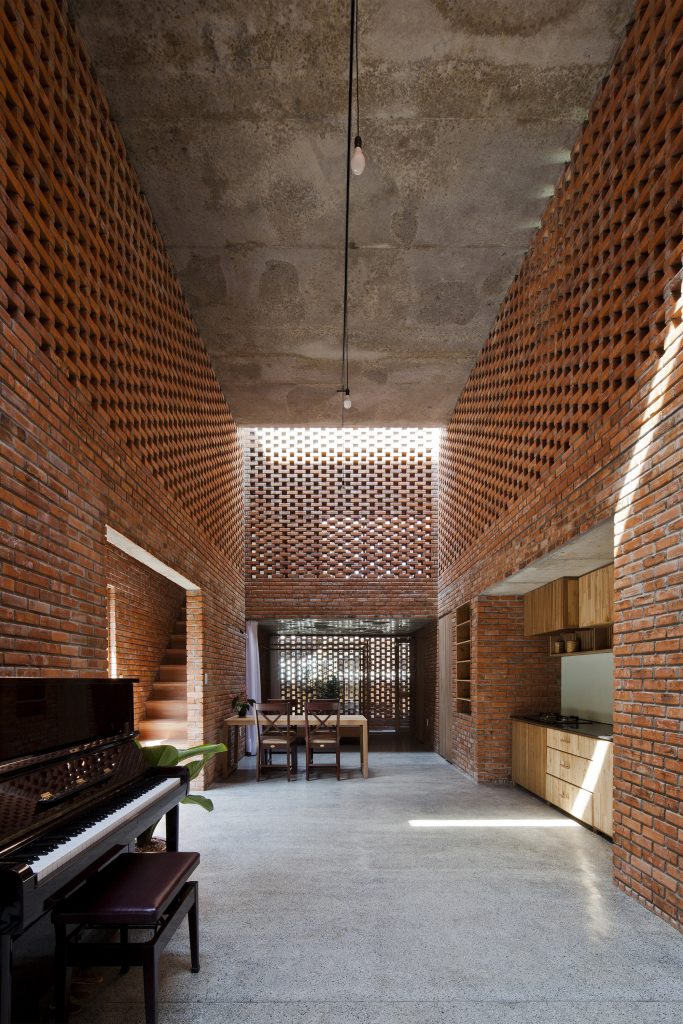
Termitary House by Tropical Space (also header image)
Perforated brick walls and panels are a particularly popular method in areas where a large amount of natural ventilation is crucial. It is widely used by Vietnamese architecture studio Tropical Space, also to honor the value of the traditional local clay brick. The team got known for their award-winning Termitary House, inspired by the termites’ special ability to build their nests: in the sharing areas of the house, the family members can still see and chat to each other through the walls with holes arranged as randomly but scientifically as in an actual termitary.

Orcanicare Showroom by Tropical Space
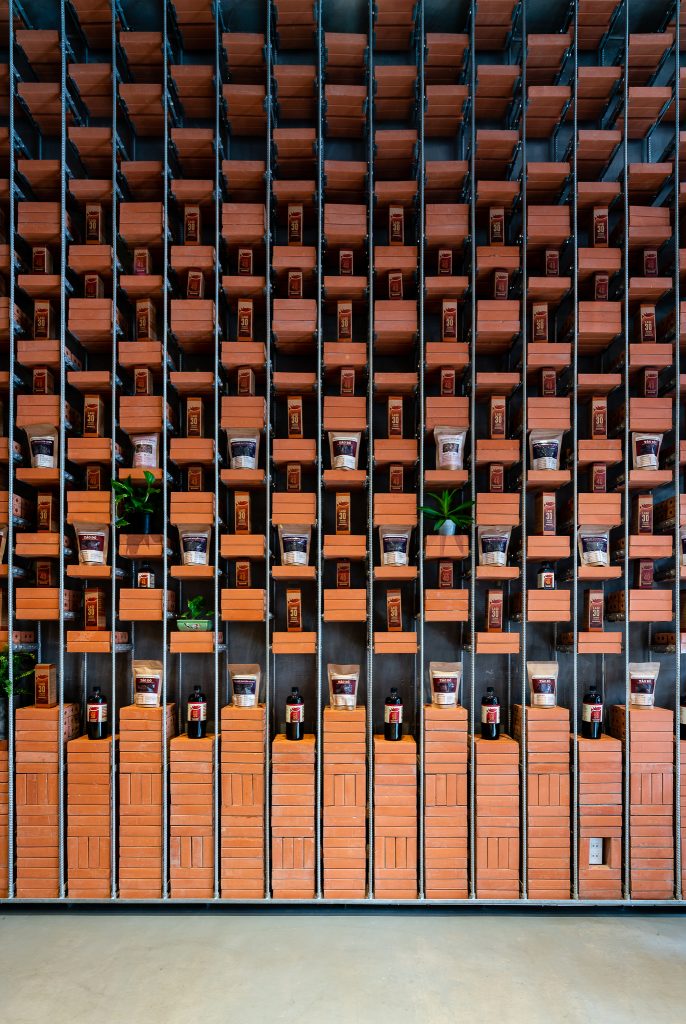
Organicare Showroom by Tropical Space
For their renovation project of Orgarnicare showroom, Tropical Space designed a consistent frame system of brick and metal fixtures that work both for the façade and the interior. Internally, the frame is used as shelves to display the items: the Vietnam traditional fish sauce and organic products. This frame system can be changed and removed flexibly depending on the size of the objects.
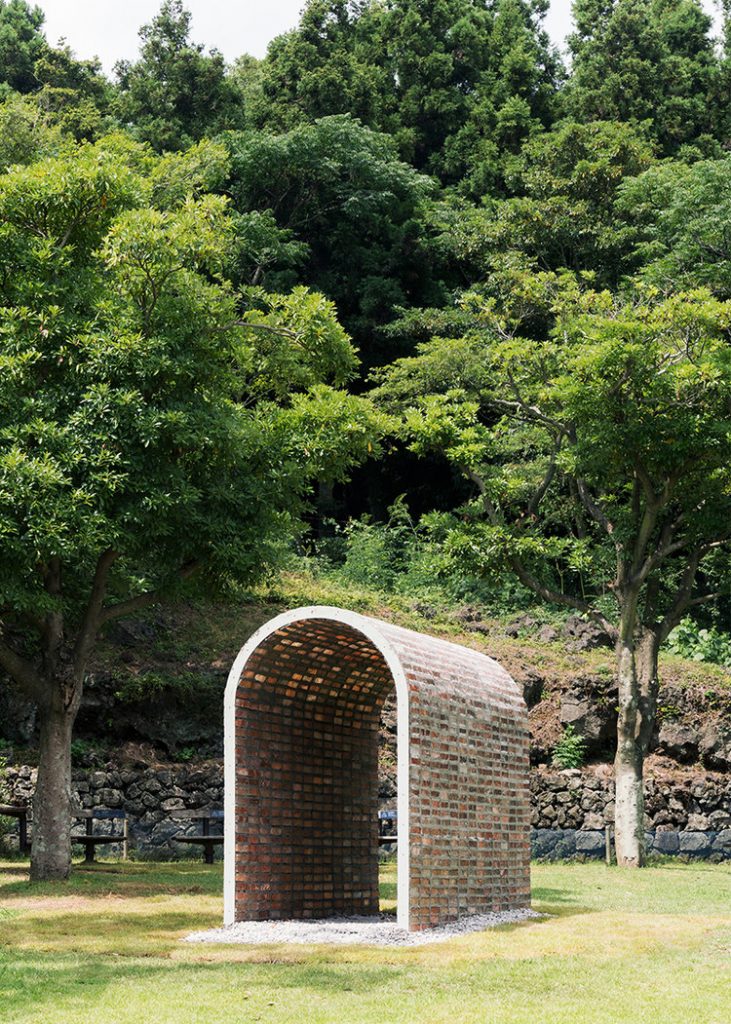
Dissolving Arch by stpmj
Last case on our blog, Dissolving Arch by stpmj, an award winning design practice based in New York and Seoul, is a kind of artwork endowed with symbolical meaning. This weather-specific installation in Jeju Island, Korea started with the curiosity about constituent of brick and its structure.

Dissolving Arch by stpmj
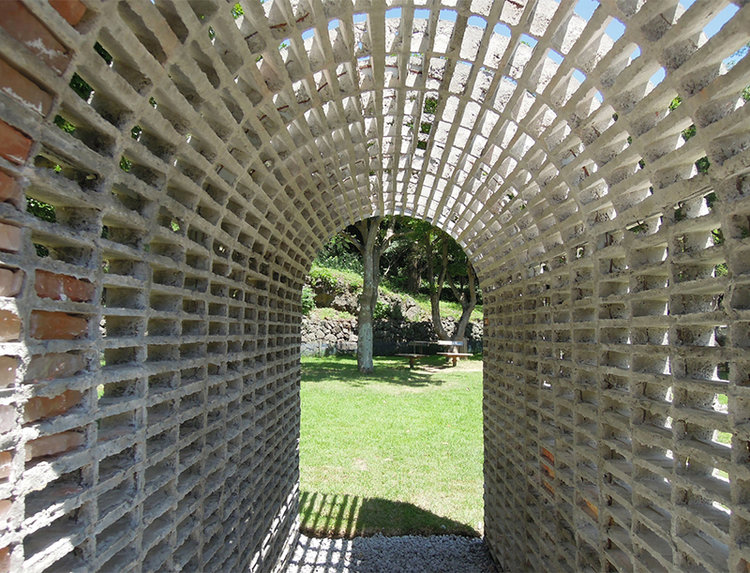
Dissolving Arch by stpmj
The arch was constructed by stacking rock salt bricks with cement mortar, and during the three month exhibition period, rain and humid weather in Jeju slowly dissolved the structure into nature, leaving a mortar skeleton in the end.
stmpj’s ambition was to create a narrative of an isolated and solid object transforming to an open and light structure, thus creating another dialogue of people and nature.